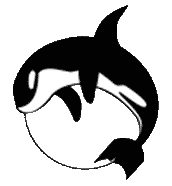Walker, Matthew, Hartley, Susan E. and Jones, Thomas Hefin  ORCID: https://orcid.org/0000-0002-7874-3627
2008.
The relative importance of resources and natural enemies in determining herbivore abundance: Thistles, tephritids and parasitoids.
Journal of Animal Ecology
77
(5)
, pp. 1063-1071.
10.1111/j.1365-2656.2008.01406.x ORCID: https://orcid.org/0000-0002-7874-3627
2008.
The relative importance of resources and natural enemies in determining herbivore abundance: Thistles, tephritids and parasitoids.
Journal of Animal Ecology
77
(5)
, pp. 1063-1071.
10.1111/j.1365-2656.2008.01406.x
|
Abstract
Summary 1. The relative importance of host-plant resources and natural enemies in influencing the abundance of insect herbivores was investigated in potted plant and natural population experiments, using tephritid (Diptera: Tephritidae) flies, their host plant, creeping thistle Cirsium arvense, and their Hymenoptera parasitoids. 2. Experimental manipulation of host-plant quality (i.e. levels of host-plant nutrients) and resource availability (i.e. the number of buds) increased tephritid abundance. There was no evidence that the seed-feeding tephritid fly Xyphosia miliaria preferentially oviposited on fertilized C. arvense. 3. At low thistle densities, X. miliaria showed a constant rate of resource exploitation. At higher thistle densities, a threshold was detected, above which additional buds were not attacked. 4. Parasitism attack was variable across host (tephritid) densities but levels of parasitism were consistently higher on the fertilized thistles. 5. Experimental manipulation of host-plant quality and resource availability (quantity) not only directly affects the tephritid population but also, indirectly, leads to high rates of parasitism. Both chemical and physical characteristics of host plants affect the performance of natural enemies. 6. Both top-down and bottom-up forces act to influence tephritid abundance, with bottom-up influences appearing to be the most important.
| Item Type: | Article |
|---|---|
| Date Type: | Publication |
| Status: | Published |
| Schools: | Biosciences |
| Subjects: | Q Science > QH Natural history Q Science > QL Zoology |
| Publisher: | Wiley-Blackwell |
| ISSN: | 0021-8790 |
| Last Modified: | 18 Oct 2022 12:16 |
| URI: | https://orca.cardiff.ac.uk/id/eprint/9195 |
Citation Data
Cited 26 times in Scopus. View in Scopus. Powered By Scopus® Data
Actions (repository staff only)
 |
Edit Item |




 Altmetric
Altmetric Altmetric
Altmetric Cardiff University Information Services
Cardiff University Information Services